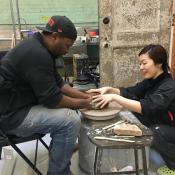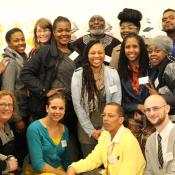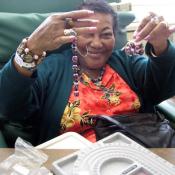IMPACT POINTS
By 2020, creativity will be the third most desired skill by employers.
Arts and cultural production in 2015 represented 4.3% of the US economy, produced $689.7 billion and created 4.7 million jobs.
The density of arts organizations and prevalence of arts events plays a role in attracting residents and businesses to (re)locate to a community by improving its image and making it more appealing.
The Future of Jobs: Employment, Skills, and Workforce Strategy for the Fourth Industrial Revolution. (2016) World Economic Forum. Retrieved 15 May 2018 from https://www.weforum.org/reports/the-future-of-jobs.
Restrepo, F. (2015). Arts & the Workforce [Electronic version]. Excerpted from Arts and America: Arts, Culture, and the Future of America’s Communities. Washington, DC: Americans for the Arts. Retrieved 3 March 2018 from https://www.americansforthearts.org/sites/default/files/Arts&America_Wo…
Walesh, Kim and Doug Henton. 2001. "The Creative Community--Leveraging Creativity and Cultural Participation for Silicon Valley's Economic and Civic Future." San Jose, CA: Collaborative Economics.
EXAMPLES OF PRACTICE
Dorchester Industries has grown out of Rebuild's workforce development program. These programs connect contractors, master craftsmen and artists with residents of Chicago's South Side to provide training in the building trades and creative industries
The Community Arts Training Institute
The CAT Institute is a 5-month training that fosters successful partnerships between artists of all disciplines, social workers, educators, community and social activists, and policymakers with the goal of creating relevant, impactful arts programs
Artists-In-Residence are carefully selected and trained to work within the hospital setting to offer elderly patients the opportunity to participate in the creative process. AIRs commit to a minimum of one year of work, working one day each week, as a
READING LIST
ORGANIZATIONS
Alternate ROOTS is committed to social and economic justice and protection of the natural world. It supports artists who have a commitment to their communities and those whose cultural work strives for social justice.
A partnership between the Rhode Island Department of Health and the Rhode Island State Council on the Arts, the State Arts and Health Plan is a roadmap for fully integrarting arts and art-based therapies into healthcare and community settings throughout the state.
Center for Arts, Business, and Culture
The studies carried out at Center for Arts, Business & Culture (ABC) focus on aesthetic and cultural analyses of economic activities. Examples include how experiences, emotions, stories, and symbols are used to create economic value; economic analysis of aesthetic activities; and how creative and cultural entrepreneurs build economic value from their artistic practices.
The Arts Impact Explorer was made possible thanks to the generous support of the Mellon Foundation and the National Endowment for the Arts. Additional support provided by the Doris Duke Charitable Foundation.
of the Arts + Social Impact Explorer





